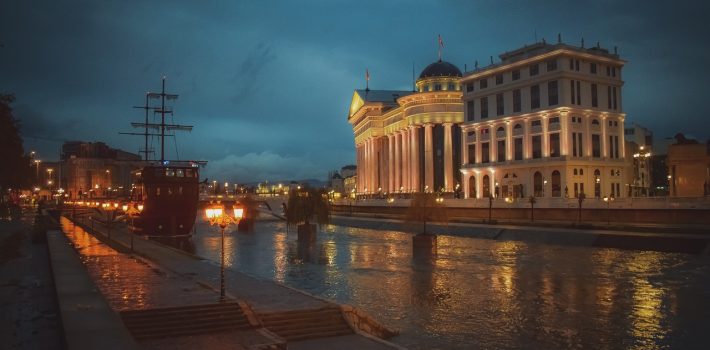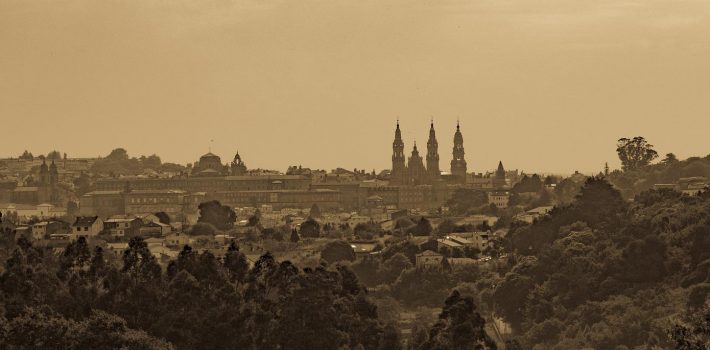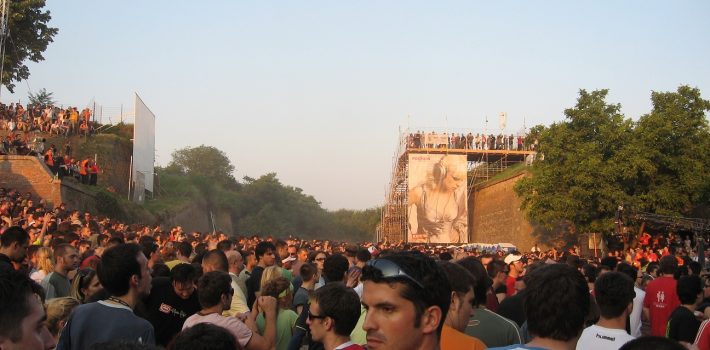How to prepare for the el Camino – the Way of Saint James in Spain?
Here you will find all useful information and answers to possible doubts if you decide to hike the path of St. James in Spain, the famous el Camino. Read More
Little School of Home Brewing Vol. 1
Is industrial beer better than craft and why not?
The best beer is the one you have in the fridge. First, let’s be clear, the first and basic postulate of every beer drinker: „The best beer is the one you have in the fridge.“ Point. No further. Another thing, drinking craft beer is not fancy. Beer is not wine. There is nothing fancy, glamorous about drinking craft or any other beer. No ritual, just a special occasion. Whether you want to cool down to +40 with just one, with a couple with the Champions League, or to roll with friends in a pub or at a party at the best man’s house, beer is here to refresh, relax and cheer you up. Whatever. Nothing more and nothing less. (ACHTUNG!!! DON’T DRIVE WHILE DRINKING!!!)
What is it that makes the difference between craft and industrial beer
Now back to my rhetorical question from the title, what is it that makes the difference between craft and industrial beer? A simple experiment, after drinking one glass of good craft beer, try a sip of your favorite Zaječarski or Heineken… You won’t, at that moment, want another. Ok, you’ll drink it, it’s great to throw away, but it definitely remains in the shadow of the previously drunk craft.
The main disadvantage of craft beer is it’s price on the market, which is three times higher than „regular“ beer. Bearing in mind the above-mentioned first postulate, the vast majority of people still decide to buy Zaječarac, Heineken… Is there a solution for that as well? Of course. Which one ?
Well… why don’t you make your own beer
For an initial investment of 50-60 euros, you can make 20 liters of excellent craft beer yourself. In addition to the basic benefit, the growth of reputation in society and the environment when you present your product is not negligible. Of course, making your own beer is a mastery that requires improvement, additional investment, time, patience, learning from mistakes, but once that hobby gets into your blood, there is no going back. Try it and you will see for yourself. I will write an explanation of the production process in the next blog, now I will say, in general, a few words about beer, its history, what it is made of and what makes beer beer.
In Europe, beer arrived from the Middle East
Beer obtained from barley was produced as far back as Sumer and Babylon. The first beer recipes were found in Egyptian tombs dating back to 2400 BC. There are records of Roman historians who say that Germanic, Saxon and Celtic tribes consumed beer.
The preservation of beer production in the Middle Ages was the responsibility of the Catholic monastic orders, who, during long and exhausting fasts, drank beer, considering it liquid bread.
Hops, as an addition to beer, were first used in Germany in the 11th century. A few hundred years later, in 1420 to be precise, in the same Germany, the production of Lager (from the German lagern-to preserve) beer, i.e. beer of the so-called „bottom fermentation“ (during fermentation, the yeast settles at the bottom of the fermenter, hence the name „bottom beer boiling“).
Until then, the so-called Ale of „top-fermented“ beer (you guessed it, the yeast floats on the surface during fermentation). The division into Lager and Ale beers has remained the basic division in brewing to this day.
Two very important scientists who improved the brewing process were the French chemist Louis Pasteur and the Danish botanist Emile Hansen, who discovered the production of pure yeast cultures, necessary for the production of most beers.
So much for history, and now let’s get to know the ingredients needed to make beer
Basically, beer consists of four ingredients:
Barley, or barley malt. The basic ingredient of beer that gives sugars, which later, the yeast turns into alcohol. Malt is also responsible for the color, smell and taste of beer. There are two basic types of malt: basic, which, depending on the recipe, makes up 60-100% of the total amount of malt, and special, which gives the beer a taste, colors it in the desired colors, and gives it a specific taste. It should be noted that wheat, oat, and rye malt can also be used in the beer production process, again depending on the recipe.
Hops. Often known as a beer spice, which is mostly responsible for the bitterness and aroma of beer. The balance between the sweetness of the malt flavor and the bitterness of the hops is what gives beer its character and separates it from other alcoholic beverages.
Yeast. An ingredient that converts malt sugar into alcohol, and creates foam. More than enough.
Water. Unjustifiably the most common villain when you don’t like Jelen because „Vojvodina has bad water“. Let’s face it, the chemistry of water is very complex and important in brewing beer. For larger quantities, it is not enough to collect some water from a well and make beer from it. Even if you find the best quality water, for certain types of beer you would have to adjust it additionally (soften it or enrich it with calcium, magnesium…). So it’s not about water as such, but about technologists and the technological process of water treatment. This applies to industrial production and more experienced craftsmen, for beginners any water that you can drink yourself is good. Therefore, tap water also comes into play, but there is nothing wrong with brewing beer in some bottled or spring water.
A word or two about the types of craft beer and their characteristics
As already stated, there are basically two types of beer: Lager and Ale. The main difference in brewing these types of beer lies in the different yeast cultures used during fermentation.
Lager. Generally the most common type of beer. Almost all the industrial beers you’ve had in your life are Lagers. In this type of beer, fermentation takes place at lower temperatures. It is drunk cold at a temperature of 5-140C, it has a rich foam, full flavor and bitterness. Among the more famous lager beers in the world, the Czech Pilsner and the German Oktobarfest stand out.
But. Top-fermented beer, where fermentation begins at higher temperatures. Generally, these beers are drunk warm, at a temperature of about 200C. They are less bitter and more aromatic than lagers.
There are several types of Ale beer
The most famous are:
Potter – Hardly like black earth, such is its color. Fruity dry taste and higher alcohol content.
Stout – also a dark black beer with aromas of caramel and coffee. The most famous Stout is Guinness
Amber – Characteristic red color, sweet taste
Irish ale – Amber’s twin brother but with a more distinct, bright red color
Pale Ale – Perhaps the most popular type of Ale beer. Lighter skin with more pronounced bitterness and fruity flavors.
Indian Pale Ale (IPA) – In popularity side by side with Pale Ale. Red color, extremely bitter and with a slightly higher alcohol content. The three most famous subtypes of IPA are: American IPA, English IPA and Double or Imperial IPA.
As a special type of beer, I would single out Wheat or Weisse beer
Originated in Bavaria. Very light and drinkable, with a slightly sour taste. It belongs to top-fermented beer, but, unlike other Ale beers, it has a minimum of 60% wheat in its malt. The most famous wheat beers are Hoegaarden, Erdinger and Paulalner.
Most of the listed beers can be found in Niš beer halls, we can help you with that
That would be it, for starters. In the next blog, there will be more words about the craft beer brewing technique.
Cheers!!!
Film and music festivals in Serbia
The most visited and most interesting are film and music festivals in Serbia, which are mostly held during the summer months Read More
Taverns in Nis
What and where to eat well in Nis, which cafes should be visited and what to order.
The specific position of the Republic of Serbia on the European map, the location where Western and Eastern culture meet and intertwine, gives it a kind of diversity that a small number of areas in the world can boast of. This cultural diversity has spilled over into the kitchens of Serbian households, as well as into the favorite gathering places of the inhabitants of Serbia and their guests – taverns, in Serbia called – KAFANA. In Serbian, and especially in taverns in the south of Serbia and Nis, the menu of restaurants often includes dishes and „home made“ specialties, gastronomic magic that has spilled over from the household into taverns. Whether it’s a business visit to Nis , visiting relatives or friends, visiting one of the festivals in the city or coming to some sport event, and the host takes him to lunch (which in Nis we often called a light breakfast that lasts until late at night), or goes to lunch on his own initiative, this „event“ is remembered for a lifetime and remains the main association when the largest city in southern Serbia – Nis, is in question – and that is food. I would not like to arrange taverns in Nis in terms of quality because everyone has their own place where the waiters know his name, where his other house is, where he comes and socializes and also come when wants to be alone. The legendary citizen of Nis Dusko Radovic gave the brightest definition of kafanas in Serbia:
“ – What do men do in kafanas?
– They aren’t doing anything.
– And what are they talking about there?
– Nothing special.
– Then why are they sitting in kafanas?
– Just because of that. “
I can’t resist that the first kafana I will mention will be the one with the highest quality food in this part of Serbia, and certainly, no matter how bravely this statement seems, the best barbecue in Europe and a place where waiters know my name .
Kafana Mrak
Institution. That would be an appropriate word if I had to describe this place in just one word. Although the approach and location of this restaurant do not promise (located in the Nis settlement Ratko Jovic, at the exit from Nis to the highway and toll station Nis – North) and maybe even the interior of the this kafana, immediately after occupying a combat position you begin to realize that you have come to the right place. The waiters are kind, cultural, unobtrusive, the menu is multilingual, and only exclusive restaurants in Belgrade and Novi Sad in Serbia can boast of such a wine list. It is known in the south of Serbia. Without brandy, in Serbian language called rakija nothing starts, not even lunch in a tavern. A wide range of various Serbian producers allows you to choose this aperitif of your choice: made of plum, quince, pear, apricot, vine, herbs and so on. Salads are divided into winter and summer. In winter, a combination of pihtije, sauerkraut and ajvar is unavoidable, while in the summer season there aresocalled Moravian ( tomato, rosted paprika, garslic and oliveoil )and vitamin salad ( gratted cabbage, carrot and radish with garlic nad olive oil). With the always great selection of cheeses, the absolute recommendation is trljanica (mixed cow’s cheese, roasted paprika, a little garlic and olive oil), which is on the menu throughout the year.Barbecue! What to say… In any case, you should definitely try the burger (either beef or mutton), stuffed chicken breast, meatballs, peasant hanger, while I personally heard the praise of a citizen of the United States that tried steaks where he traveled all over the world and that in his life he did not eate a better steak on an egg than in the kafana Mrak Mile Stojković on the boulevard February 12 in Niš! The busiest pubs in Nis could also be proud of their choice of beer.
When someone asks me what kind of kafana is that, how could I not describe it to them as much as you do here, I just tell them „the only famous person who did not come to kafana Mrak, and stayed in Nis is Novak Djokovic“. Athletes, actors, politicians, ambassadors, celebrities seem to be unable to imagine their arrival in Nis without coming to this cafe. It is interesting that despite all these celebrities, this facility still retains the status of a tavern and has not grown into a restaurant. The ordinary people still stops by for a pljeskavica on their feet or for a rakija.
Kafana Biser
One of the oldest kafanas in Nis, which is managed by Mrs. Marta, has three facilities in Nis. If you want to have a quick drink or something to eat in the summer, the garden, which is actually located on the sidewalk in Kosta Stamenkovića Street and under 50-year-old linden trees, is the right choice. In winter, you will have the privilege of smelling on barbecue and smoke for days after staying inside this tavern. The facility on the tennis courts in Jadranska Street, next to Nisava and under the walls of the ancient Nis fortress, is the right place to quench your thirst and get away from the city noise and heat during the summer days. The sausage there has a divine taste.
Kafana Orač
Located at the beginning of the legendary Knjaževačka Street in Niš, across from the old Nitex chlotes factory , now a productive hall of Italian Benetton, there is a great tavern, a favorite place of many citizens of Nis and their guests – Kafana Orač. Whatever you order there, you won’t go wrong, but it is still a warm recommendation to go there around 1 pm, because you will have a hard time eating better roast lamb in Nis.
Kafana Galija
Kafana Galija, one of the oldest, if not the oldest taverns in Nis, the tavern after which the legendary Nis rock band – Galija was named, is located in the strict downtown of Nis – in Nikola Pasic Street and has its own summer garden in the bohemian part of Nis – to the potter’s alley. Guests are often entertained by quality acoustic music performed by the best musicians from Nis.
Kafana Amerikanac
Also, the tavern that has existed intermittently for over 40 years is the kafana at the foot of Kovanluk in Nis – in Kovanlucka Street – Amerikanac. What is a betrayal of other Nis catering facilities is that the tavern is run by the famous Nis musician Saita, who also plays in it with his band. What can be heard from the opus of Shaban Bajramovic and other gypsy music is masterful. Pure emotion.
Nishlijska Mehana
Also, one of the oldest kafanas in the largest city in the south of Serbia is Nislijska Mehana, located in the beautiful Prvomajska Street in Nis. The great wine list of various Serbian small wine producers stands out, the wonderful ambience in the cellar of the same and the message on the already reserved table – You are late!
Kafana Mali Podrum
In the heart of Nis, but again out of the noise and crowds, there is a cafe Mali podrum ( little cellar ) Why is it called that? Well, because some twenty years ago it was opened in the basement of a house in Stevan Nemanja Street. It is characterized by a small garden under a beautiful tree-lined avenue, always fresh and delicious salads as well as sheep’s sausage and roasts, which are, as the old people of Nis say, hot at lunch time.
Kafana Dagi Plus
The specificity of this cafe, which is located in the Nis settlement of Trošarina, in Radmila Kovačević Street, are all possible and impossible sheep meat specialties. I remember my long time ago coming to this cafe, at the urging of a friend and the waiter’s answer when I asked him which white wine he had for a spritzer – he sad you will get one that I will bring to you. Some taverns are visited only once in life time.
Kafana Tri Fenjera
In the immediate vicinity of the Nis Green Market and the Banovina of Nis – where the administration of the University of Nis is located, there is also an old kafana – Three Lanterns. In short – if you want to get seriously fat and not eat for the next two days, this is the right place for you. Pork leg and veal tails. They are looking for liters of syringe or beer. Recommendation – do not eat after 3 pm because you will digest it until tomorrow at the same time. Greasy and sweet, it sticks to your fingers. Incredibly.
Kafana Skadarlija
A cafe that has existed since 1987, which has not changed its appearance or interior since its opening. A couple of yellowed air conditioners were installed at the beginning of the 20th century, woven pixels and checkered tablecloths were replaced by the same ones ten years ago, carpets on the wall still carry dust from the time of the Socialist Federal Republic of Yugoslavia. In the ecstasy of live music and alcohol, mostly during the winter months, guest used to unscrew the light bulbs and continue their conduction only from the lighting coming from the flagpole in Dušanova Street. During the day, a gathering place of all kinds of people who, as in a shop window, peel their third brandy or drink their first morning Turkish coffee trying to wash away the stains from last night. This cafe has a soul, definitely, and musicians and waiters paint it and give it that old-fashioned flair.
Kafana Roštiljko
The youngest of all the above is the Roštiljko tavern in Urša Predića Street in Niš, but equally good and also specific for the ready meals by the recopies of our grandmothers, as well as for the great barbecue and Paradise rose wine, pleasant garden and always pleasant music. Ska, reggae and rock rhythm can often be heard from the speakers.
It is impossible to list everything in the sea of Nis taverns. A special atmosphere is to visit small kafanas, local taverns that absolutely every settlement in Nis has . Some of the favorite places of some Nis residents are the cafes Zlatković, Amfora, Zlatni Dukat, Olio, Kabak, Verige, Kod Rajka, Stari Jastrebac, Dušanov Konak, Lion Plus, Svrljižanka, etc.
In any case, we can say with certainty that Nis is the absolute capital of barbecue in Serbia, the people of Leskovac, forgive me!


















